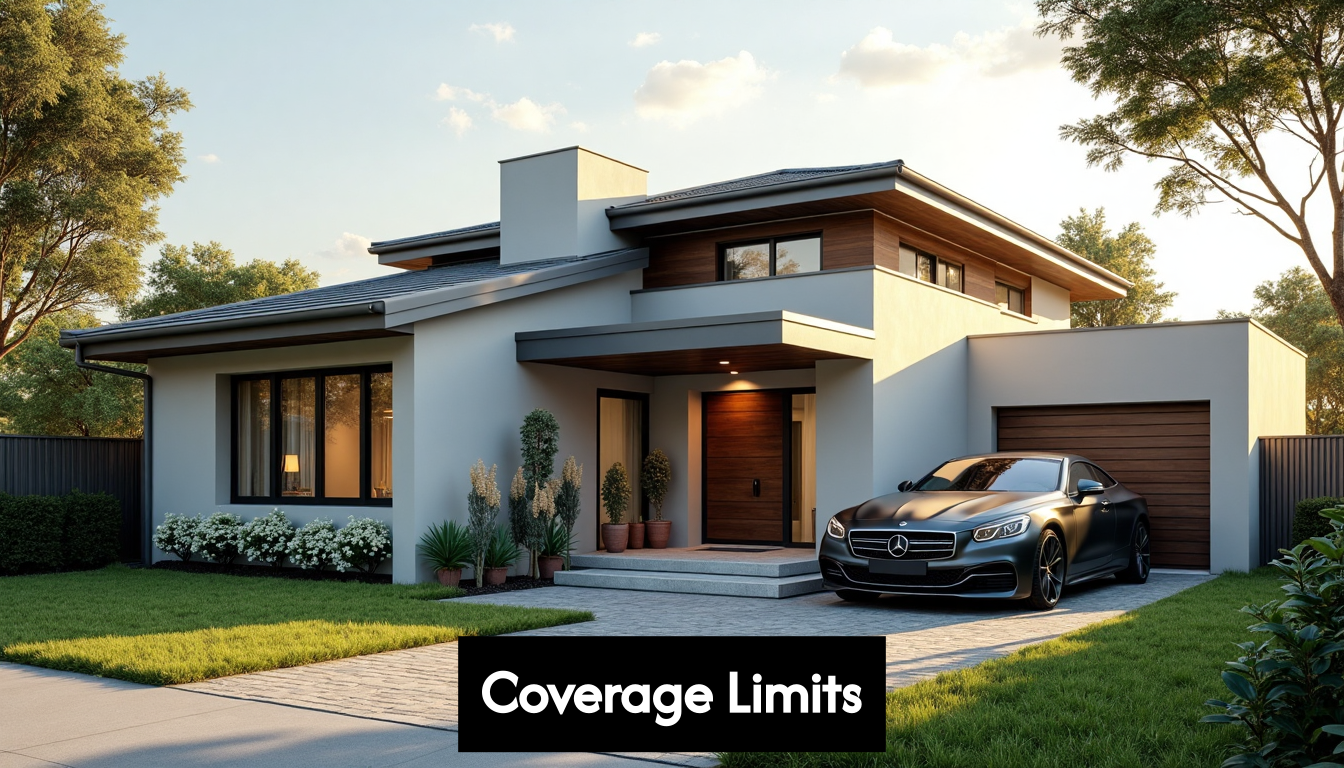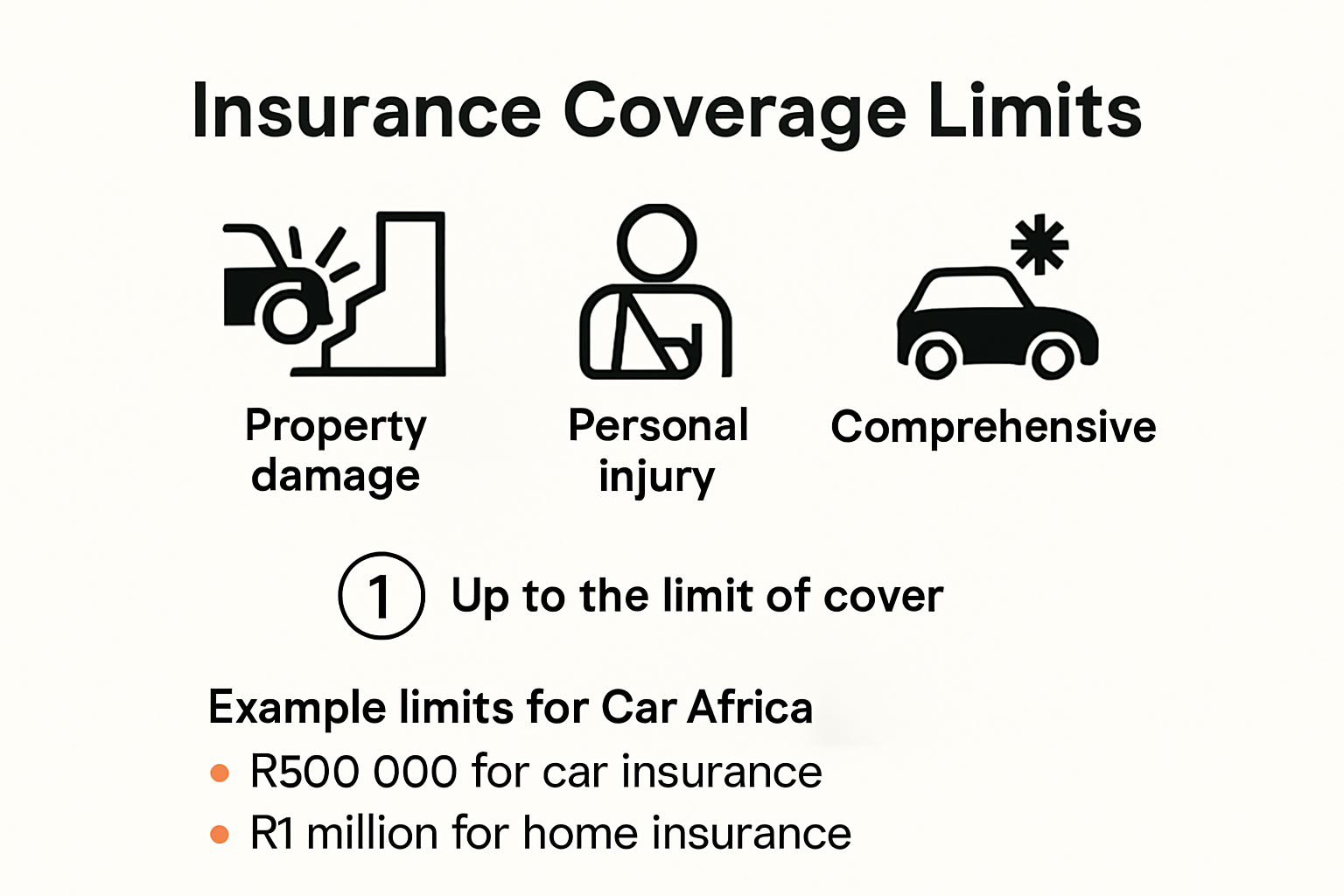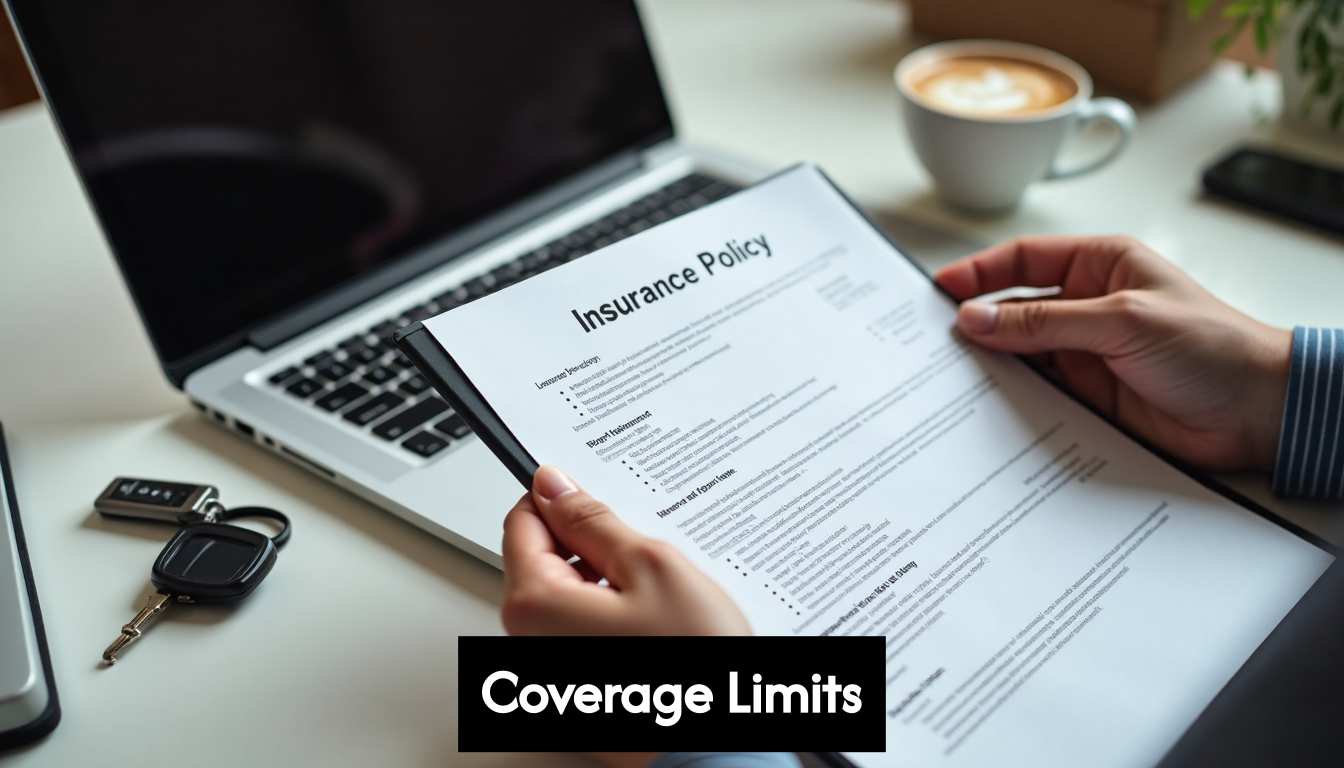
South Africans are paying closer attention to insurance coverage now more than ever, and with good reason. A single accident involving a modern car can rack up repair bills over R500,000, yet most car owners only discover their policy limits too late. Most assume their insurance will always cover the costs, but that’s not the full story. Sometimes, your cover leaves a big financial gap, which only shows up when you need it most.
Table of Contents
- What Are Insurance Coverage Limits?
- How Coverage Limits Protect Car And Home Owners
- Choosing The Right Insurance Coverage Limits
- Common Mistakes To Avoid With Policy Limits
Quick Summary
| Takeaway | Explanation |
|---|---|
| Understand Insurance Coverage Limits | Insurance coverage limits are the maximum payouts an insurance policy offers during a claim, crucial for managing financial risk and ensuring adequate protection against unexpected events. |
| Assess Personal Risk Profiles | Properly evaluating your asset values, potential risks, and financial capabilities is essential in choosing the right coverage limits tailored to your individual circumstances. |
| Avoid Common Mistakes | Underestimating asset values and overlooking policy exclusions can severely impact financial protection, making regular policy reviews and accurate valuations critical for effective coverage. |
| Consider Tailored Protection Strategies | Customizing coverage limits based on vehicle/house characteristics and personal situations helps ensure comprehensive protection that aligns with evolving risks and asset values. |
What Are Insurance Coverage Limits?
Insurance coverage limits represent the maximum financial protection an insurance policy provides when an unexpected event occurs. These critical boundaries define how much an insurer will pay out during a claim, directly impacting your financial security and potential out-of-pocket expenses.

Understanding the Basic Concept
At its core, an insurance coverage limit is a predetermined monetary cap that determines the extent of financial protection in your car or home insurance policy. When a covered incident happens, your insurance company will only pay up to this specified amount. For instance, in car insurance, this might mean a limit of R500,000 for property damage or R1 million for personal liability.
The Automobile Association of South Africa emphasizes that understanding these limits is crucial. Different types of coverage within a single policy can have varying limits. A comprehensive car insurance policy might have separate limits for collision damage, medical expenses, and third-party property damage.
Types of Coverage Limits
Insurance policies typically include multiple coverage limit categories. According to FirstForWomen Insurance Guide, these generally include:
- Property Damage Limits: The maximum amount paid for damage to another person’s property
- Personal Injury Limits: Maximum compensation for medical expenses and rehabilitation
- Comprehensive Coverage Limits: Total protection against multiple risk scenarios
For car insurance in South Africa, basic third-party coverage often starts around R500,000 for property damage. Comprehensive policies can extend coverage up to R5 million, with personal accident benefits ranging between R25,000 and R100,000 per person.
Homeowners should similarly understand their building and contents insurance limits. A policy might cover structural damage up to a specific amount, while personal belongings have a separate, often lower limit. This means if your home suffers significant damage, you could be responsible for expenses exceeding your policy’s coverage limit.

Knowing these limits allows you to make informed decisions about additional protection. If standard coverage seems insufficient, you might consider purchasing additional insurance or an umbrella policy to bridge potential financial gaps. Remember, the goal is comprehensive protection that provides genuine peace of mind without leaving you vulnerable to unexpected financial strain.
How Coverage Limits Protect Car and Home Owners
Coverage limits serve as a critical financial shield for car and home owners, protecting them from potentially devastating economic consequences in the event of accidents, damages, or unexpected incidents. By establishing clear boundaries of financial responsibility, these limits help manage risk and provide structured protection across various scenarios.
Financial Risk Management
Insurance coverage limits act as a strategic buffer against catastrophic financial losses. According to AutoGen’s 2025 Motor Trends Report, the increasing complexity and technological sophistication of modern vehicles make comprehensive coverage more crucial than ever. A single major accident with an advanced vehicle can result in repair costs exceeding R500,000, which would be financially ruinous without appropriate insurance protection.
For home owners, coverage limits prevent total economic devastation from structural damages, natural disasters, or significant property losses. A comprehensive policy with well-structured limits ensures that major repairs or rebuilding expenses can be managed without forcing homeowners into potential bankruptcy or long-term financial hardship.
Tailored Protection Strategies
Coverage limits are not one-size-fits-all solutions. FirstForWomen Insurance Guide highlights the importance of customizing insurance protection to individual risk profiles. Different scenarios require different levels of coverage:
- Vehicle Protection: Coverage limits that account for your car’s value, technological features, and potential replacement costs
- Home Structural Coverage: Limits based on current rebuilding expenses and potential regional risks
- Personal Property Protection: Specific limits for contents, valuables, and high-risk items
The Automobile Association of South Africa recommends periodic policy reviews to ensure coverage limits remain aligned with changing asset values and potential risks. A policy that made sense five years ago might be woefully inadequate in 2025, given rapidly changing economic conditions and asset valuations.
For car owners, this means considering factors like vehicle depreciation, emerging technological repair costs, and potential third-party liability expenses. For home owners, it involves evaluating current construction costs, potential environmental risks, and the value of personal belongings.
Ultimately, coverage limits provide more than just financial protection. They offer peace of mind, allowing car and home owners to navigate life’s uncertainties with confidence, knowing they have a structured safety net that can absorb unexpected financial shocks without completely derailing personal economic stability.
Choosing the Right Insurance Coverage Limits
Selecting appropriate insurance coverage limits requires careful consideration of personal assets, potential risks, and financial capabilities. The right coverage protects you from significant financial vulnerability while ensuring you are not overpaying for unnecessary protection.
Assessing Personal Risk Profile
Determining the ideal coverage limits starts with a comprehensive evaluation of your individual circumstances. AutoGen’s 2025 Motor Trends Report suggests that modern vehicle complexity demands more nuanced insurance strategies. For car owners, this means considering factors like vehicle value, technological features, and potential repair costs.
Homeowners must similarly evaluate their property’s unique characteristics. This includes assessing the current replacement value of the structure, contents, and potential regional risks such as natural disasters or crime rates. Read our guide on comprehensive home protection strategies to understand how to match your coverage to your specific needs.
Calculating Optimal Coverage Amounts
The Automobile Association of South Africa recommends a strategic approach to determining coverage limits:
- Vehicle Value: Choose limits that fully cover your car’s current market value
- Potential Liability: Consider third-party damage and potential legal expenses
- Personal Asset Protection: Ensure coverage extends to protecting your overall financial portfolio
For car insurance, standard policies in South Africa typically offer third-party property damage coverage starting at R500,000, with comprehensive policies extending up to R5 million. Personal accident benefits range between R25,000 and R100,000 per person. However, these standard limits may not be sufficient for everyone.
Homeowners should conduct a detailed inventory of their possessions and property value. This means calculating not just the structure’s replacement cost, but also the value of contents, special items, and potential additional living expenses in case of significant damage.
Consider consulting with an insurance professional who can provide personalized advice tailored to your specific situation. They can help you identify potential coverage gaps and recommend strategies to mitigate financial risk without overextending your budget.
Ultimately, choosing the right insurance coverage limits is about finding a balanced approach. You want comprehensive protection that provides genuine financial security without creating unnecessary financial strain. Regular policy reviews ensure your coverage evolves alongside your changing life circumstances, assets, and potential risks.
Common Mistakes to Avoid with Policy Limits
Navigating insurance policy limits can be complex, and many car and home owners inadvertently make critical errors that compromise their financial protection. Understanding these common pitfalls can help you make more informed decisions about your insurance coverage.
Underestimating Asset Values
One of the most significant mistakes is failing to accurately assess the true value of your assets. Automobile Association of South Africa warns that undervaluing your car or home can lead to devastating financial consequences. For instance, many owners use outdated replacement values that do not account for recent improvements, technological upgrades, or market changes.
In car insurance, this might mean basing your coverage on an old vehicle valuation that does not reflect current market prices or the cost of replacing a technologically advanced vehicle. Similarly, homeowners often overlook recent renovations or improvements that significantly increase their property’s value. Explore our guide on comprehensive home protection strategies to understand how to accurately assess your asset’s true worth.
Overlooking Policy Exclusions
Insurance policies are intricate documents filled with specific conditions and limitations. According to CarMag’s Insurance Insights, many policyholders make critical mistakes by not thoroughly understanding their policy’s exclusions:
- Driving Restrictions: Some policies have specific conditions about who can drive the vehicle
- Geographic Limitations: Coverage might be restricted to certain regions or countries
- Usage Conditions: Business use or commercial activities may void personal insurance policies
For home insurance, exclusions can be equally complex. Certain types of damage—such as flood damage in flood-prone areas or damage from specific natural disasters—might require additional specialized coverage. Assuming standard policies cover all scenarios can leave you financially vulnerable.
Additionally, many policyholders do not realize that failing to maintain their property or vehicle can result in claim denials. Regular maintenance, security measures, and adherence to policy conditions are crucial for maintaining valid coverage.
Periodic policy reviews are essential. Your insurance needs change as your life circumstances evolve—a new job, a home renovation, or purchasing a more expensive vehicle can all impact your ideal coverage limits. Consulting with an insurance professional can help you identify potential gaps and ensure your policy provides comprehensive protection.
Remember, the cheapest policy is not always the most cost-effective. A slightly higher premium that provides robust coverage can save you significant financial stress in the long run. By understanding these common mistakes, you can make more informed decisions and build an insurance strategy that genuinely protects your most valuable assets.
Frequently Asked Questions
What are insurance coverage limits?
Insurance coverage limits are the maximum amounts an insurance policy will pay out for specific claims. They define your financial protection during an unexpected event, such as an accident or damage to property.
Why are coverage limits important for car owners?
Coverage limits are crucial for car owners because they determine how much protection you have in case of accidents or damages. A single incident can lead to repair costs far exceeding standard limits, so understanding your coverage is essential to avoid financial strain.
How do you choose the right insurance coverage limits for your home?
To choose the right coverage limits for your home, assess your property’s current replacement value, any renovations made, and your personal assets. Regular policy reviews and consulting with an insurance professional can also help tailor your coverage.
What common mistakes should I avoid regarding insurance policy limits?
Common mistakes include underestimating the value of your car or home and overlooking specific exclusions in your policy. Regularly reviewing your policy to ensure it reflects current asset values and understanding conditions can help you maintain adequate financial protection.
Get Total Peace of Mind With the Right Insurance Limits
Worried your car or home policy will leave you out of pocket after a big claim? This article has highlighted how quickly repair bills can exceed standard coverage limits in South Africa, and how easily homeowners undervalue their contents or miss hidden exclusions. It is stressful not knowing if you have real protection, especially when life throws the unexpected at you.
Let King Price take the guesswork out of finding your perfect cover. Our platform helps you compare car insurance, home insurance and more, with tips tailored to modern risks and asset values. Tackle those pain points from the article head-on and secure comprehensive protection with support at every step. Do not wait for a costly shock. Visit Insurance Tips and Solutions today and find cover that truly matches your needs. Act now to adjust your limits and enjoy lasting financial peace of mind.



7 Responses